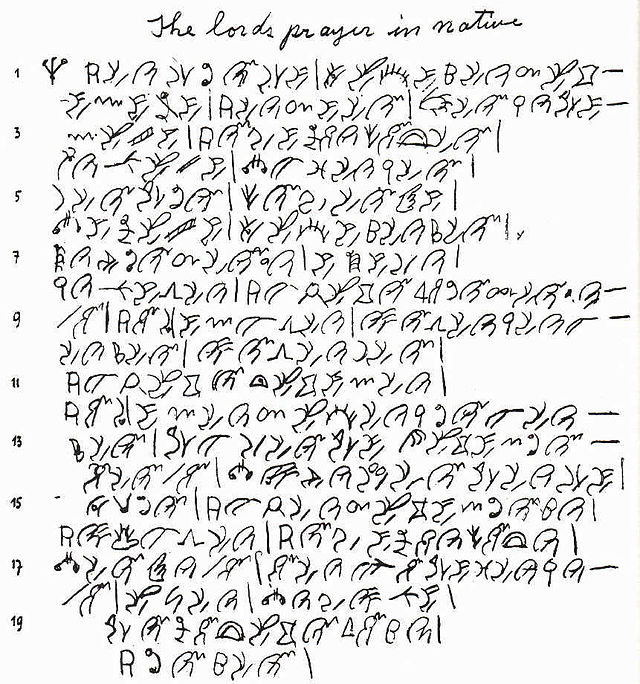Top Qs
Timeline
Chat
Perspective
Yugtun script
Syllabary writing system From Wikipedia, the free encyclopedia
Remove ads
The Yugtun or Alaska script is a syllabary invented around the year 1900 by Uyaquq to write the Central Alaskan Yup'ik language. Uyaquq, who was monolingual in Yup'ik but had a son who was literate in English,[2] initially used Indigenous pictograms as a form of proto-writing that served as a mnemonic in preaching the Bible. However, when he realized that this did not allow him to reproduce the exact words of a passage the way the Latin alphabet did for English-speaking missionaries, he and his assistants developed it until it became a full syllabary.[3] Although Uyaquq never learned English or the Latin alphabet, he was influenced by both.[2] The syllable kut, for example, resembles the cursive form of the English word good.

The Yup'ik language is now generally written in the Latin alphabet.[2]
Remove ads
Bibliography
- Albertine Gaur, 2000. Literacy and the Politics of Writing, ISBN 978-1841500119
- Alfred Schmitt, 1951. Die Alaska-Schrift und ihre schriftgeschichtliche Bedeutung, Simons, Marburg
- Alfred Schmitt, 1981. Untersuchungen zur Geschichte der Schrift. Eine Schriftentwicklung um 1900 in Alaska, Harrassowitz, Wiesbaden (Reprint der Ausgabe Leipzig 1940), ISBN 3-447-02162-4
- Vol. 1 Text, vol. 2. Abbildungen
Remove ads
References
Wikiwand - on
Seamless Wikipedia browsing. On steroids.
Remove ads
